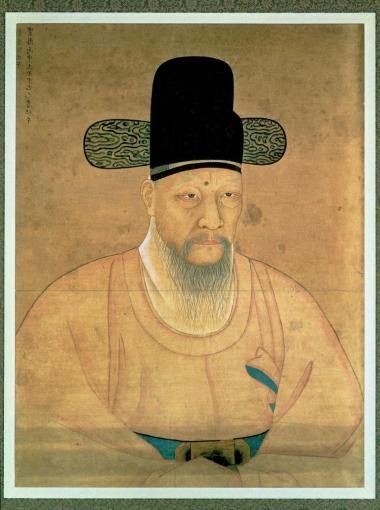His youthful face with its adolescent charm offers a pleasing, truly fresh smile – the famous Paekche smile – that distinguishes him from the austerity of the carved effigies of its close neighbour the Silla Kingdom (57 BC-668). His body is frail, the bust nude, the waist slender, with gracile limbs. He is sitting in “Western style” in the panga sayu sang meditation pose: one leg folded over the other in a natural manner, his slightly bent head resting on a hand that just grazes it, and his elbow on his knee. This pose, derived from Gandhara art, and conveyed by China, appears to have been appreciated in ancient Korea, in the North as in the South, before being assimilated by Japan after the 6th century, as attested by the famous Miroku Bosatsu of the Horyu-ji temple at Nara.
The drapery with its even pleats falling over the front, with a “keyhole” layout, recalls that of the Chinese dynasty of the Northern Wei (386-534). Handled with fluidity without the slightest stiffness, the lines of the drapery are extremely soft, also suggesting ties with Southern China.
The bodhisattva is donning a typically local crown that presents, in the style of Northwestern India turbans, a motif of a moon crescent in which is set an ovoid pearl reflecting the contribution of more remote lands. This sculpture is a symbol of the original art of Korea as well as its role as a stage on the Silk Road between China and Japan.

